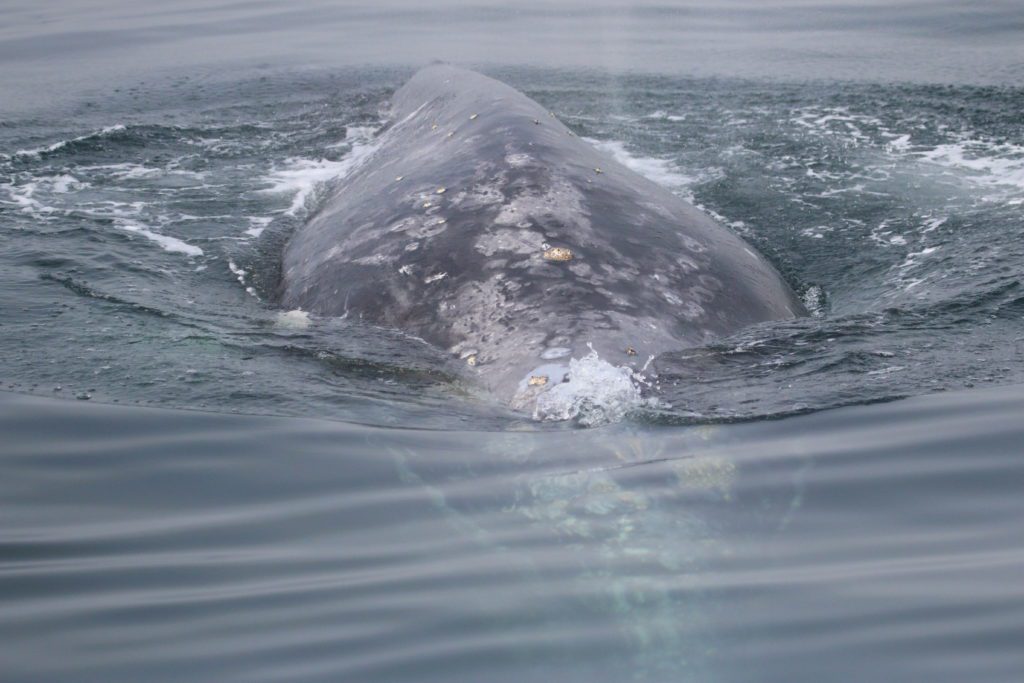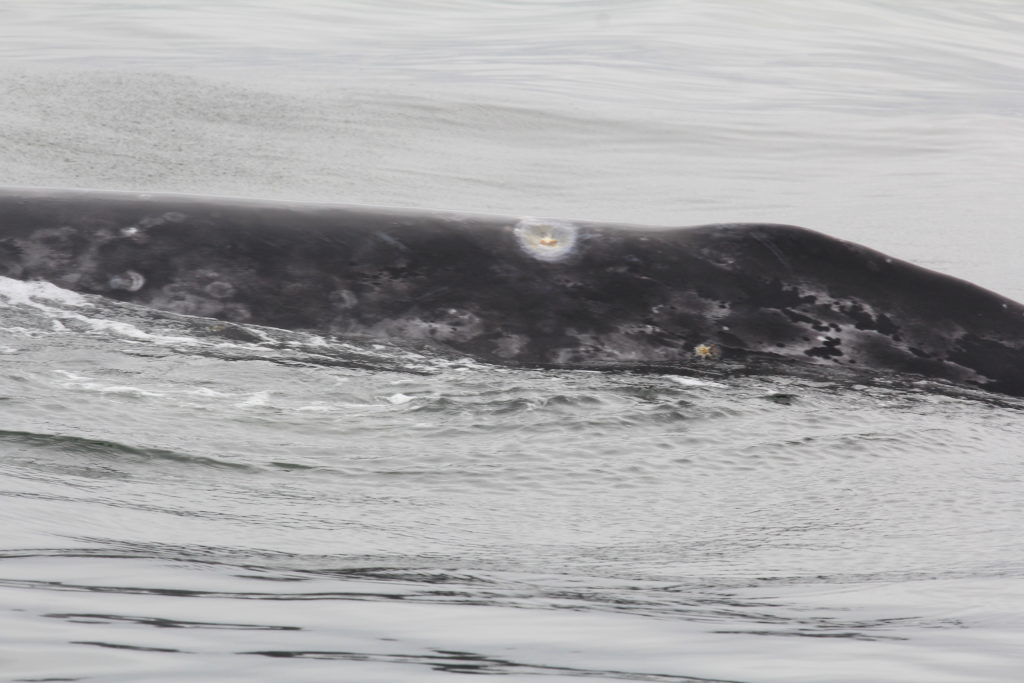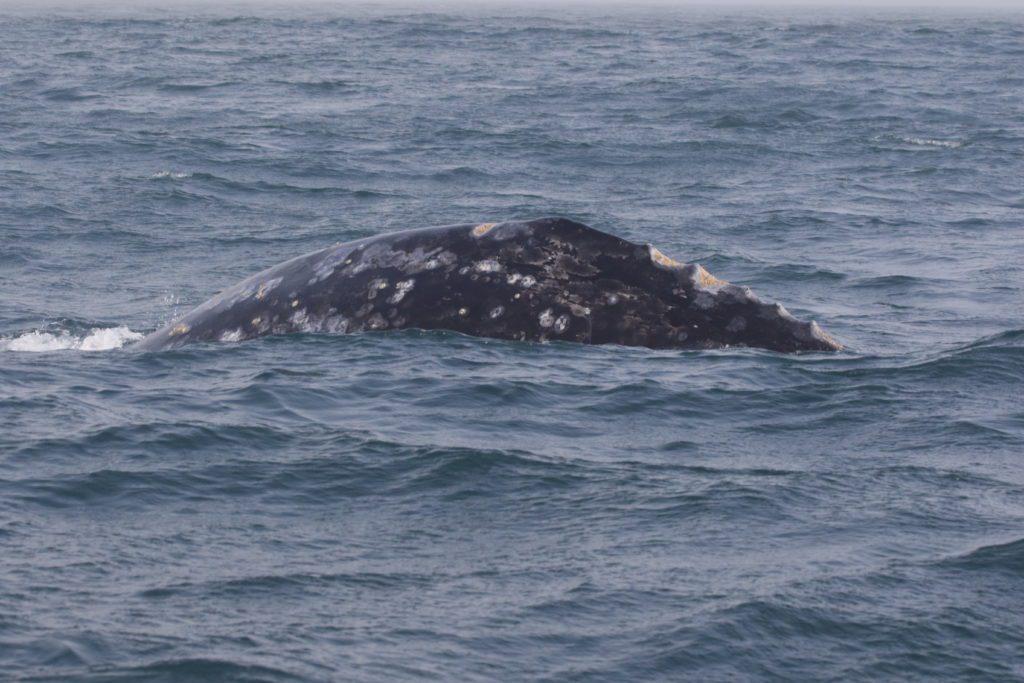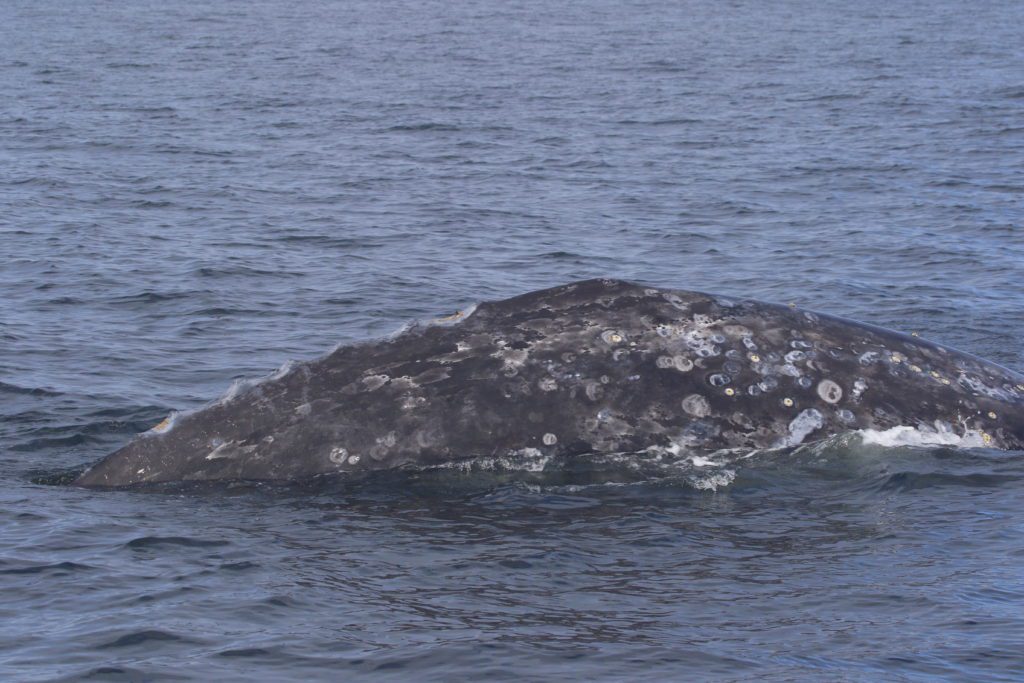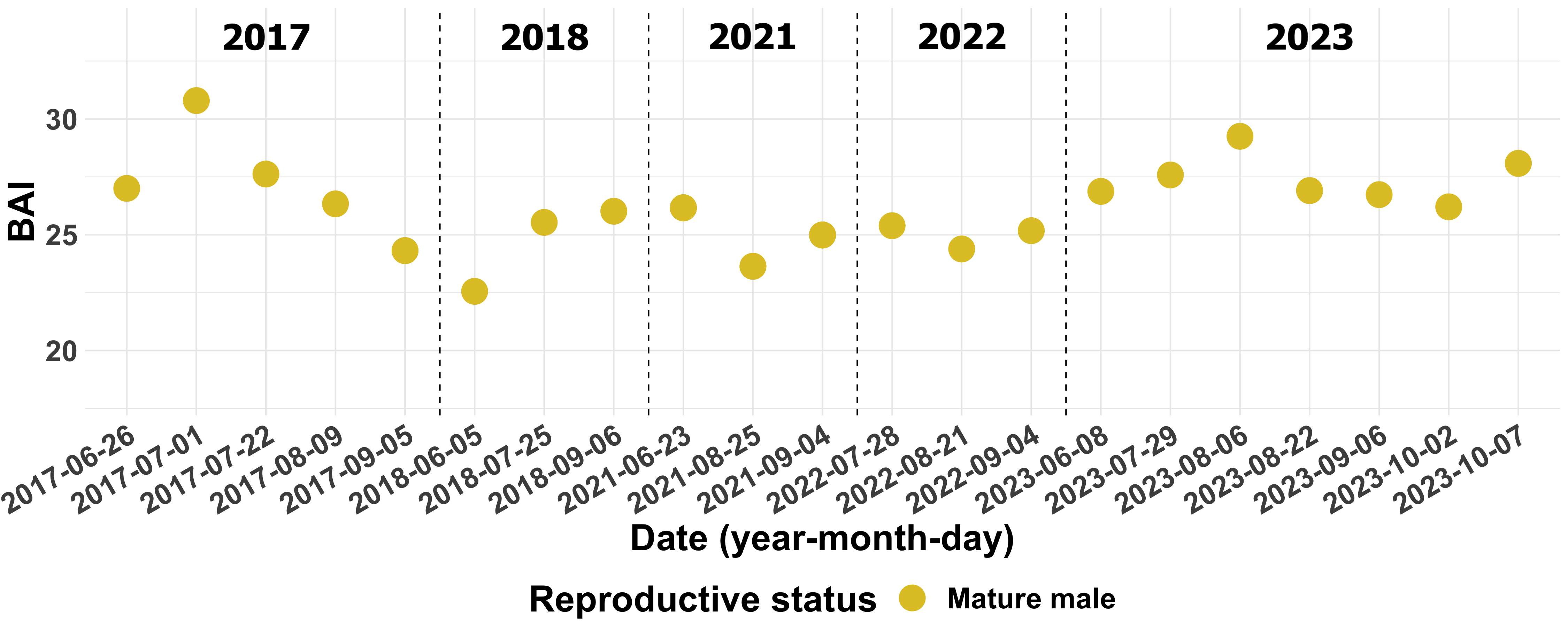Orange Knuckles is a male gray whale that was first observed in 2005, making him an adult who is at least 19 years old (as of 2024). His name is Orange Knuckles – “O.K.” for short – because when we first observed him, he had orange coloration from cyamids (also known as whale lice) in between his knuckles (what are knuckles?). In addition to his knuckles, we also identify O.K. by his tag scar. He was tagged by researchers in 2009 using an implantable satellite tag, which are used to track whales over long periods of time (days to months). This tagging data from gray whales, including Orange Knuckles, were used to describe the home range of PCFG whales to help us understand the distribution patterns of these whales and identify areas of high use that are important to protect. Orange Knuckles’ home range includes coastal Oregon as we have seen him feeding in our study area almost every year of our study (2015-2021).
We saw O.K. regularly in each foraging season from 2017-2019, but not in 2020, and then observed him consistently in from 2021 to 2023. From these frequent sightings of O.K., we have tracked his body condition across the years, which shows an increase during each foraging season. Orange Knuckles’ body condition has not varied as much as reproductive females we have also monitored, but O.K. is certainly a player in the reproductive scene of gray whales in Oregon. We collected two fecal samples from Orange Knuckles in 2018, one in June and the other in September, which showed a large increase in Orange Knuckles’ testosterone level. This elevated testosterone level indicates that O.K. was in a reproductive state and potentially preparing for mating opportunities. In fact, we typically see an increase in gray whale social behavior towards the end of the season (September and October), which indicates that the whales are transitioning from primarily foraging behavior towards more emphasis on mating. In October 2019, we saw Orange Knuckles trying to “court” (whale term for “flirt”) a mature female for a long time (followed her around and did synchronized surfacings) in his efforts to make a good impression.


